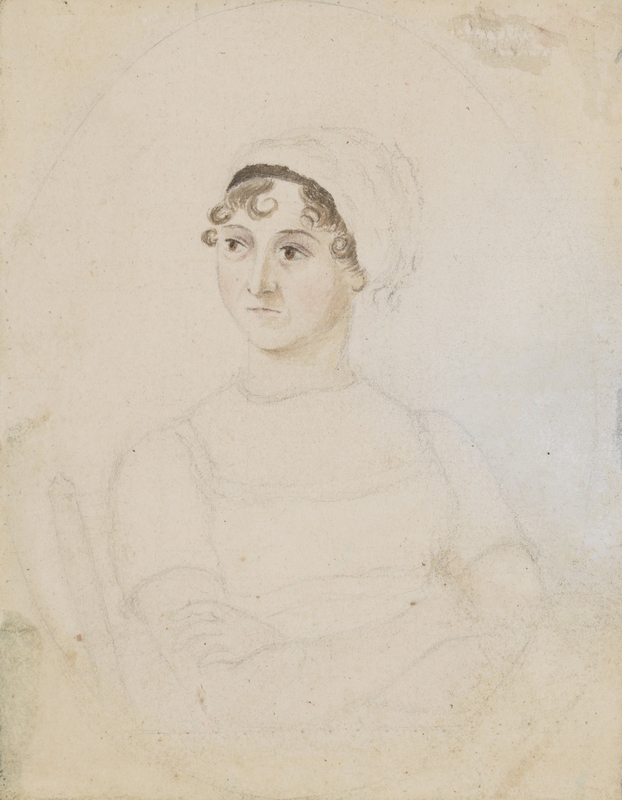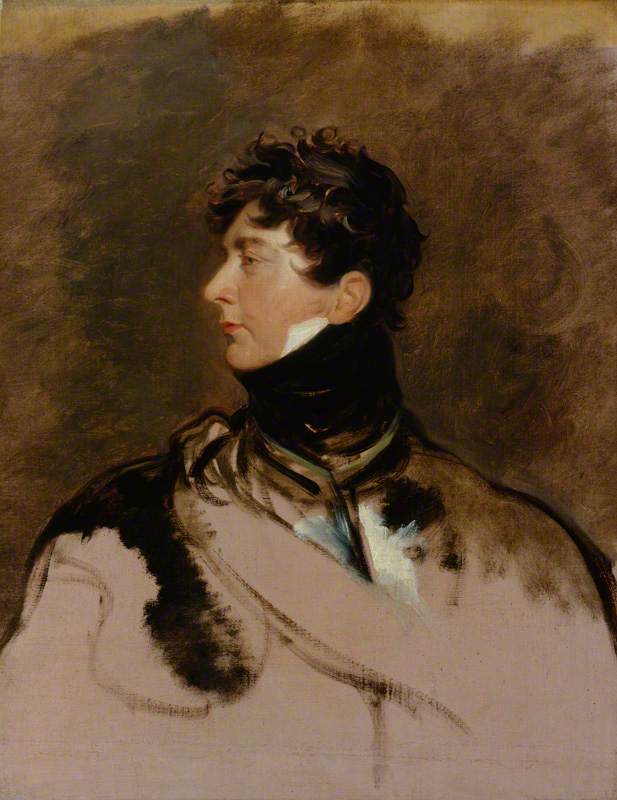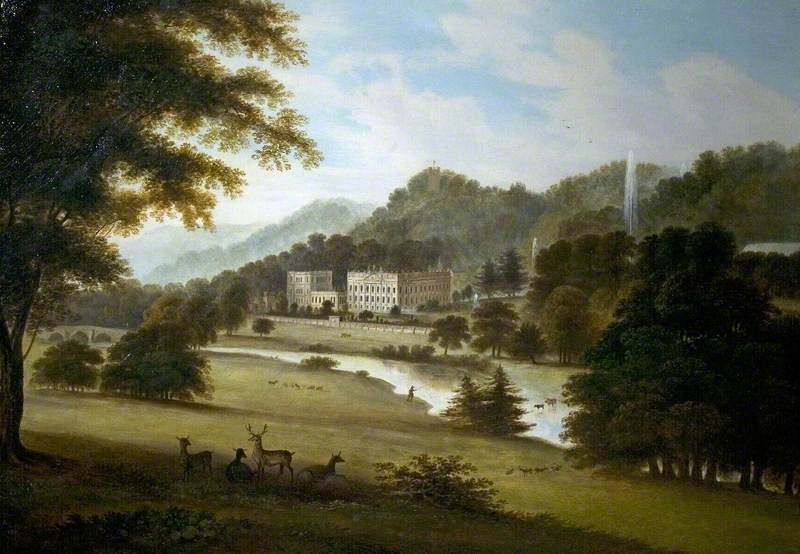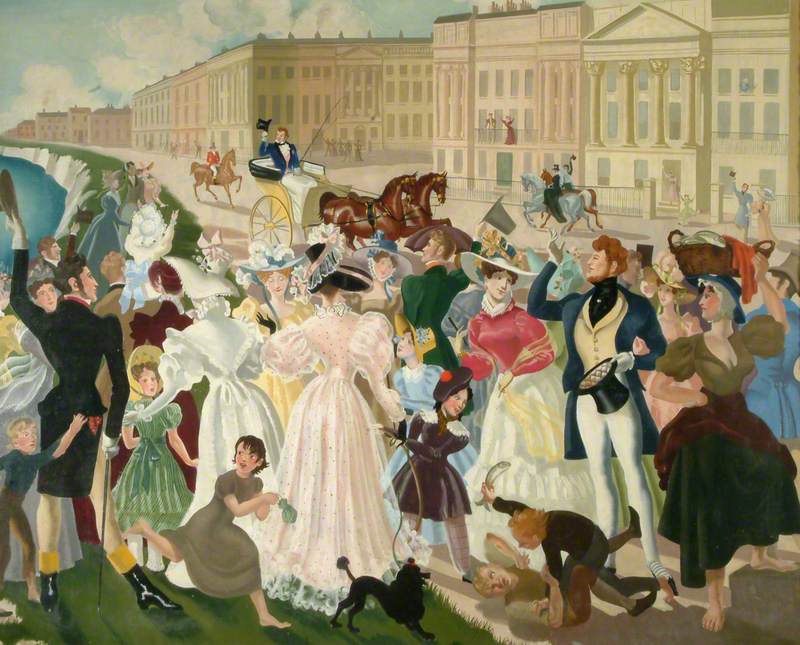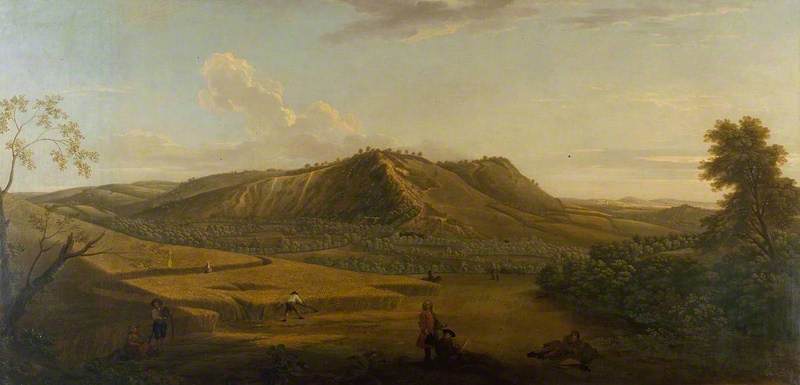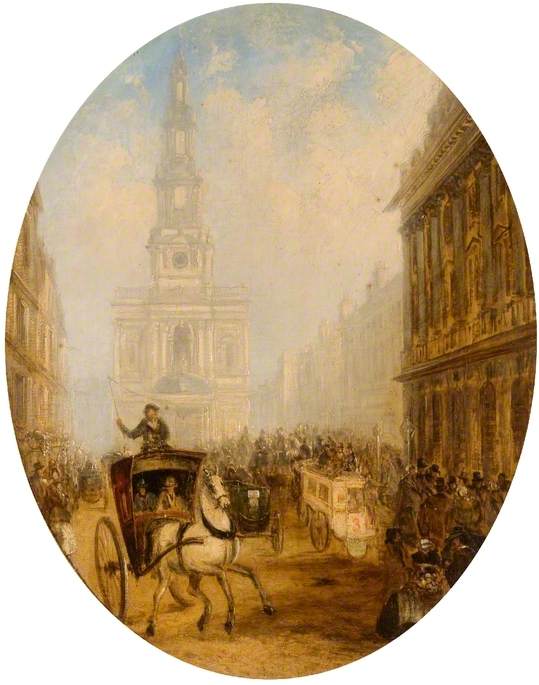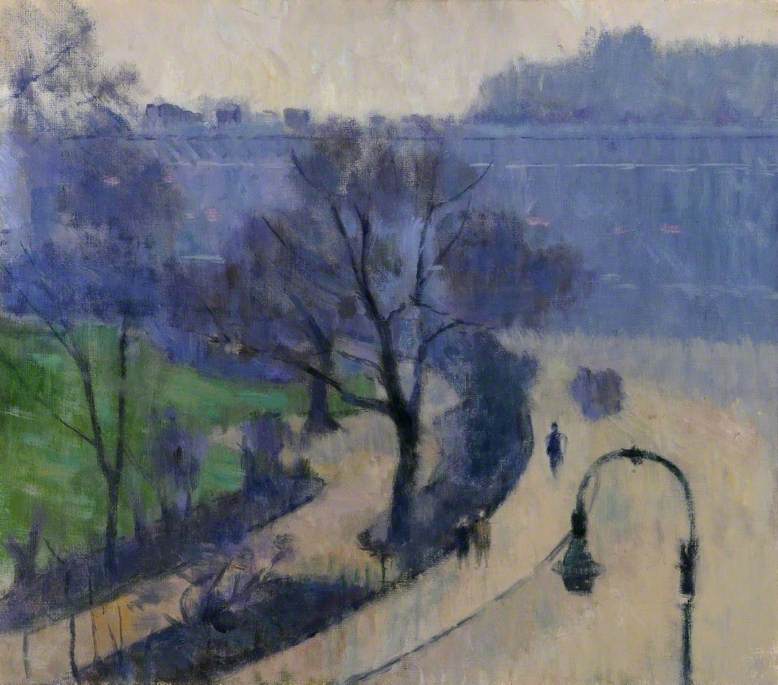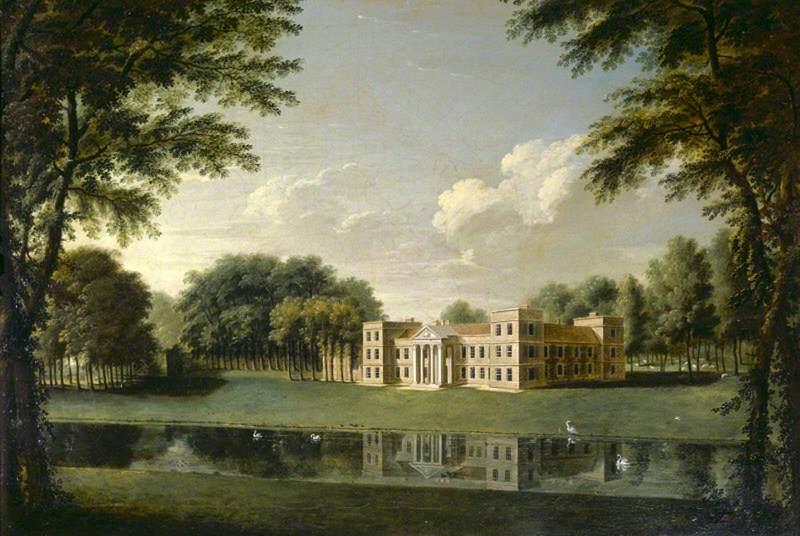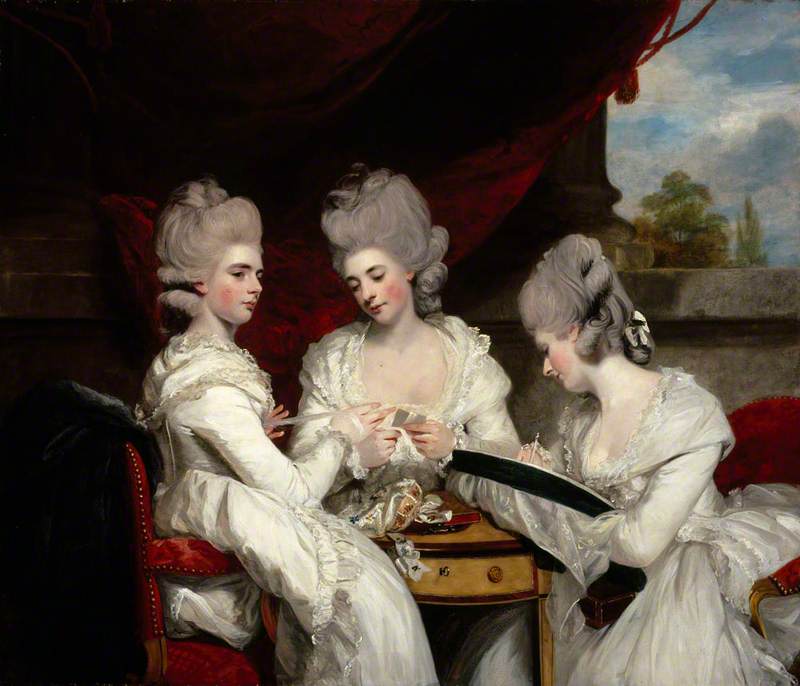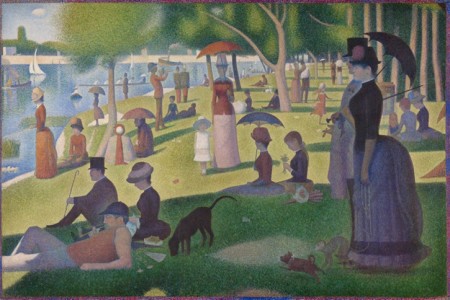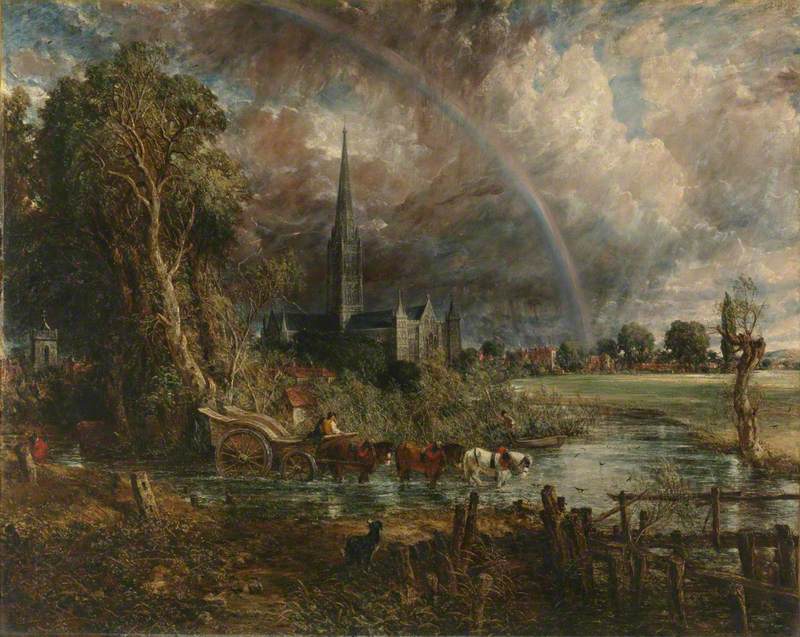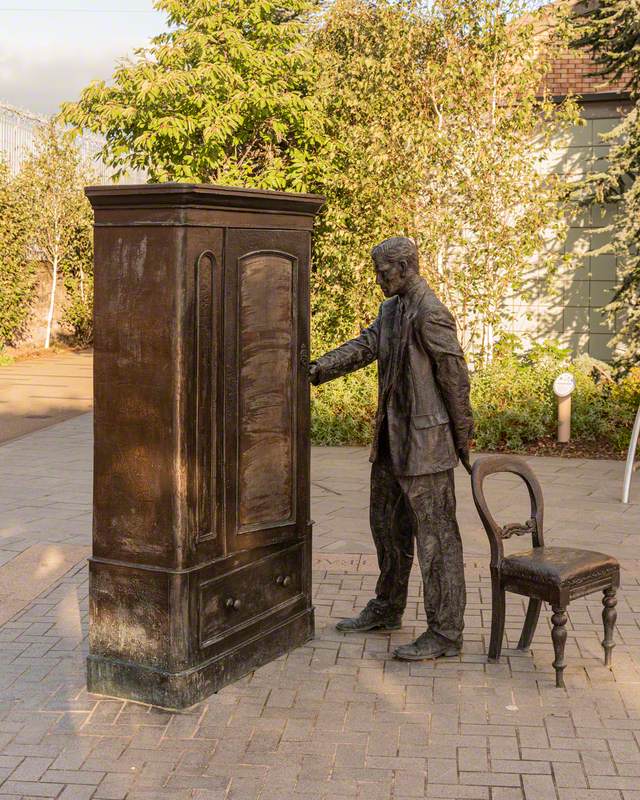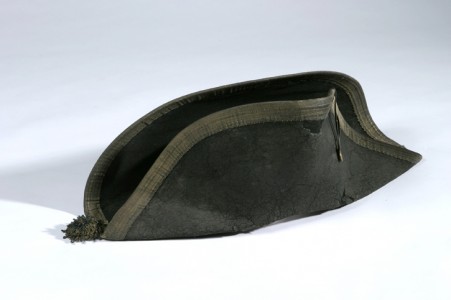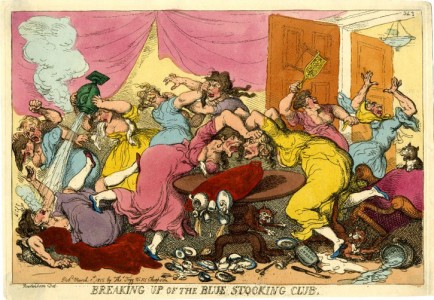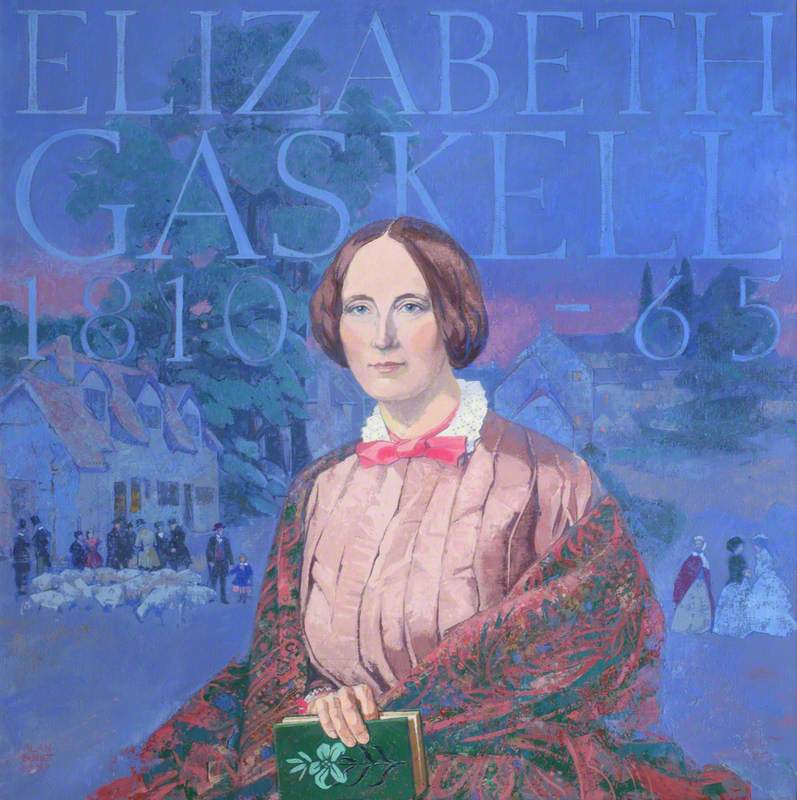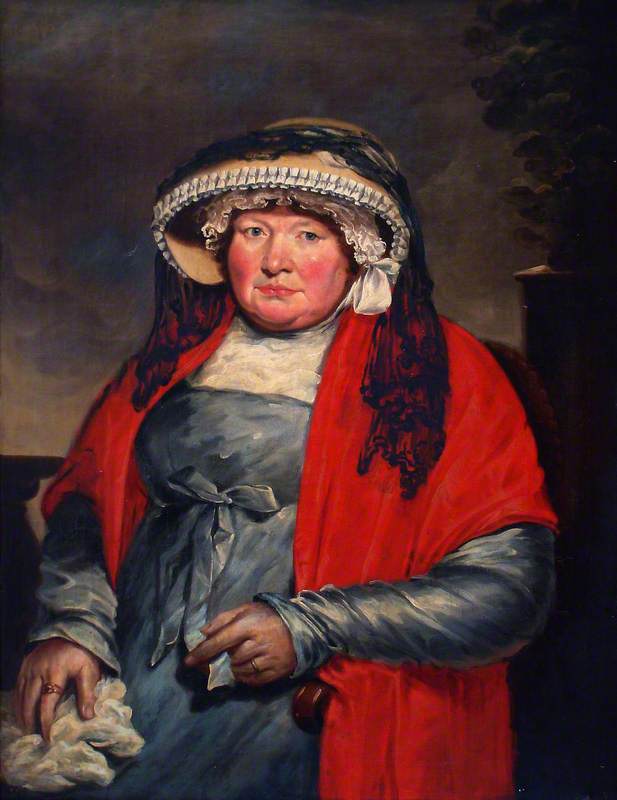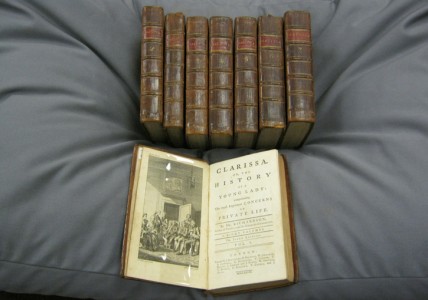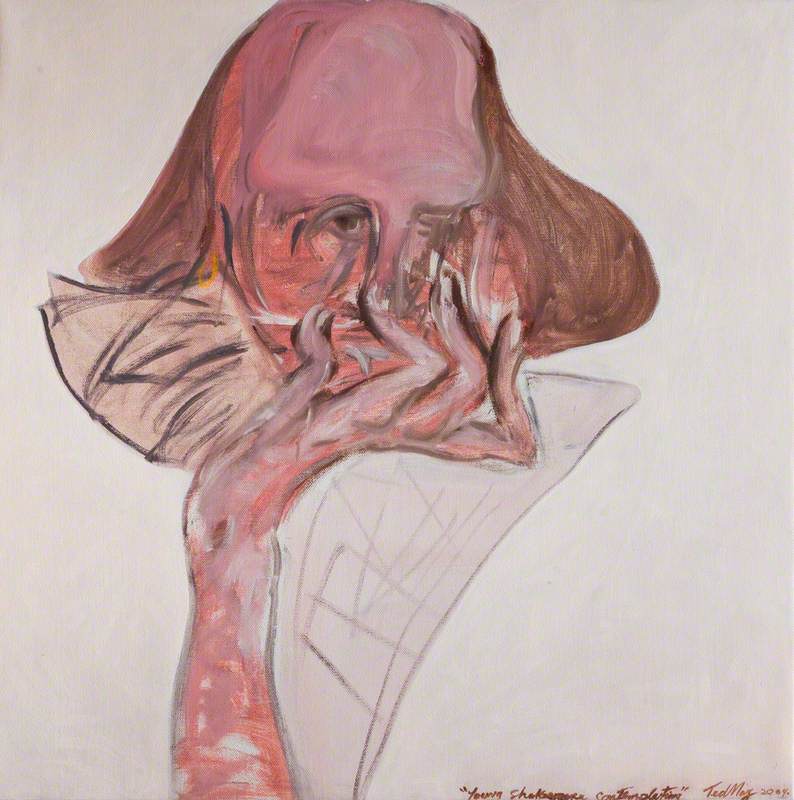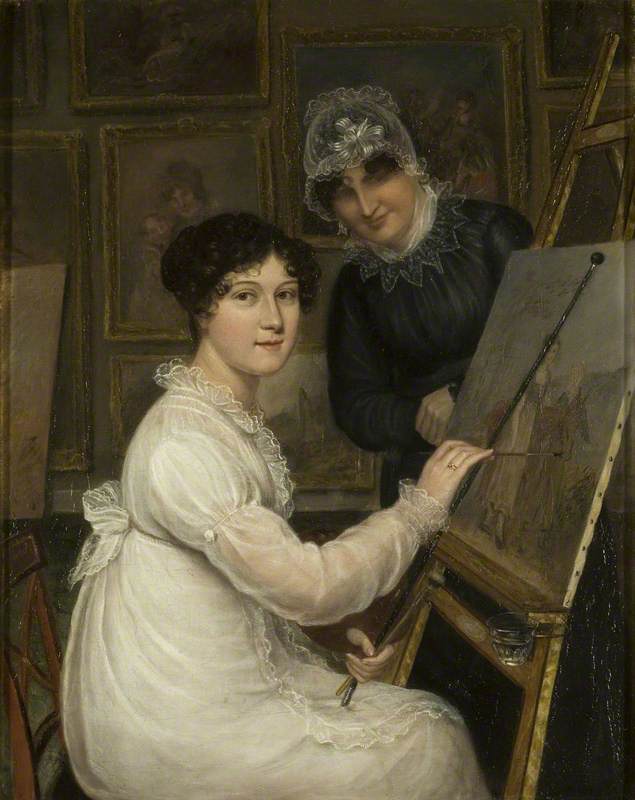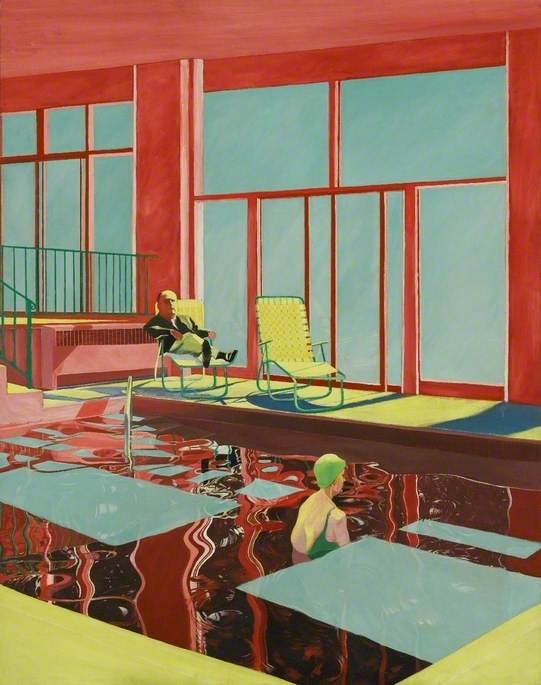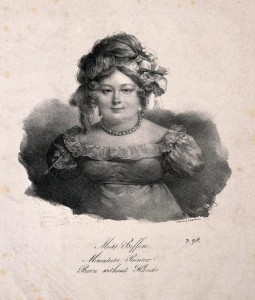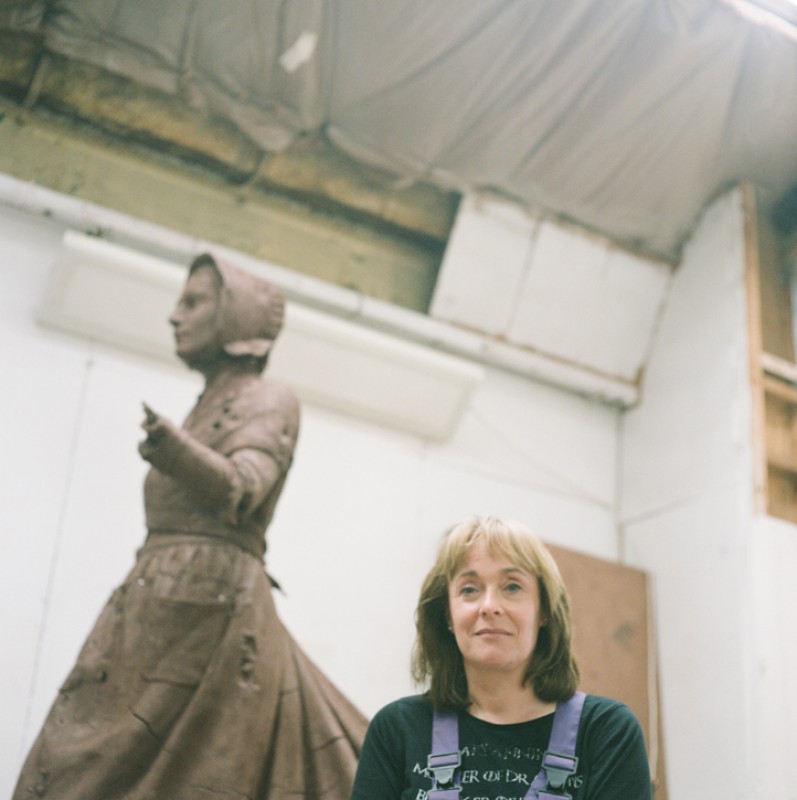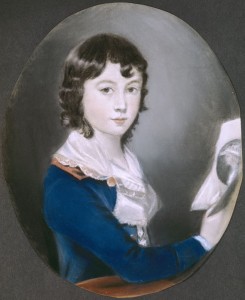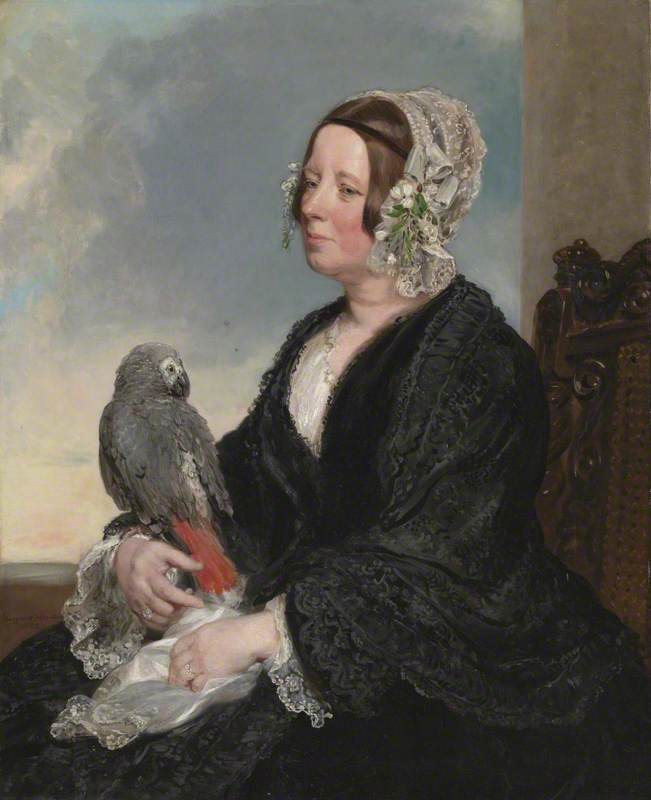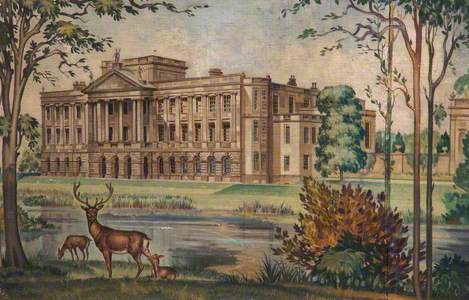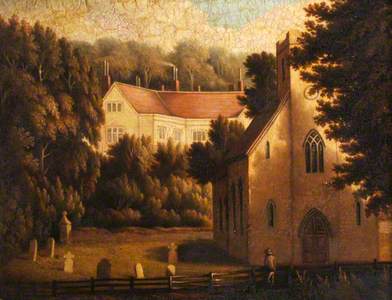When searching for Jane Austen in art, the author herself proves enigmatic. There is only one confirmed portrait of her in existence, by Jane's sister Cassandra – which we'll soon all become well acquainted with when it adorns our ten pound notes. The portrait is not particularly detailed, leaving us to fill in the blanks using our imaginations.
However, there is a lot of art that can help bring us into the world of Jane Austen. Her books give us vivid depictions of a certain kind of life: Austen's fictional societies, in George IV's England, are a safe haven of grand country homes, gentle villages, dashing men and pretty women, plus scores of dances and picnics. They are perfectly untouched by the strife taking place on the continent.
Through Art UK we can recreate the fictional worlds Austen crafted so beautifully – and go in search of the author herself.
Pride, Prejudice and the National Trust
'Elizabeth, as they drove along, watched for the first appearance of Pemberley Woods with some perturbation; and when at length they turned in at the lodge, her spirits were in a high flutter. The park was very large, and contained great variety of ground. They entered it in one of its lowest points, and drove for some time through a beautiful wood, stretching over a wide extent...'
Pride and Prejudice is possibly the most famous of Austen's works. The characters are well known and beloved: the bookish, clever Lizzy Bennet, the aloof Mr Darcy – now a byword for a romantic hero – the comic relief of Mrs Bennet, the simpering Lydia and opportunistic Wickham... yet spare a thought for the stately homes that have also, over the years, played major parts in adaptations of Pride and Prejudice.
The BBC's 6-part series in 1995 featured the National Trust's Lyme Park as Pemberley, though in the adaptation's most famous scene it's possible that some viewers weren't just admiring the architecture. You can see the house in this clip, if you look past Colin Firth's wet shirt.
In Joe Wright's 2005 big-screen adaptation, Chatsworth House – the largest privately owned stately home in the country – steps in as Pemberley. The House is also named as one of the estates Elizabeth visits in the novel itself, on the tour of Derbyshire with her aunt and uncle. In real life, Chatsworth still displays the bust of Mr Darcy as played by Matthew Macfayden in the film.
The nation's art collection also gives us a glimpse into the place that Lydia was so keen to escape to, away from quiet little Meryton: Regency Brighton, full of dashing officers and the hopes of marriage:
'In Lydia's imagination, a visit to Brighton comprised every possibility of earthly happiness. She saw, with the creative eye of fancy, the streets of that gay bathing place covered with officers...'
Emma and an ill-fated picnic
'They had a very fine day for Box Hill ... Nothing was wanting but to be happy when they got there. Seven miles were travelled in expectation of enjoyment, and everybody had a burst of admiration on first arriving...'
Box Hill in Surrey is the picturesque backdrop for the eponymous Emma to make snide comments about Miss Bates, a less-than-scintillating acquaintance, while on a group picnic: after being rebuked by Mr Knightley, she has something of an epiphany about her behaviour and starts along the path to finding contented love.
The idea of eating outdoors in summer is now something that we find completely normal – perhaps even inherently British – but Emma was at the forefront of this trend: picnics started to really grow in popularity at the beginning of the nineteenth century, and were influenced by the Romantic sensibility that eating outdoors was somehow a way to commune with nature (if by 'communing with nature' you mean 'getting ants in your sandwiches').
Getting Austen-tatious in London
In contrast to the clean countryside, there's often a bit of sleaze and scandal running through Austen's London locations: perhaps Austen was inspired after lodging with her brother in Covent Garden in the summers of 1813 and 1814. In Mansfield Park, Maria Rushworth and Henry Crawford run off from a house in Wimpole Street (after their adulterous affair is revealed), in Pride and Prejudice Lydia and Wickham run away to London and are subsequently married there (in St Clement Dane's church, below: 'We were married, you know, at St Clement's, because Wickham's lodgings were in that parish'), and London is where Marianne, in Sense and Sensibility, discovers that Willoughby is not the man she thought he was. Willoughby later bemoans the fact that he continually bumps into Marianne, having married another woman.
Mr Darcy is ready with a haughty comment when he discovers that the Bennets' aunt and uncle live in Gracechurch Street, Cheapside: 'But it must very materially lessen their [the Bennet sisters'] chance of marrying men of any consideration in the world.' During the Regency, Cheapside was an area chiefly associated with trade, which those with inherited wealth (like Darcy) could look down on. Darcy's apparent objection to the Gardiners is one of the many prejudices overcome in the novel: despite 'only' living in Gracechurch Street, they turn out to be some of the book's most pleasant characters.
The London to Brighton Coach at Cheapside, London
1831
William Turner (active 1767–1831) 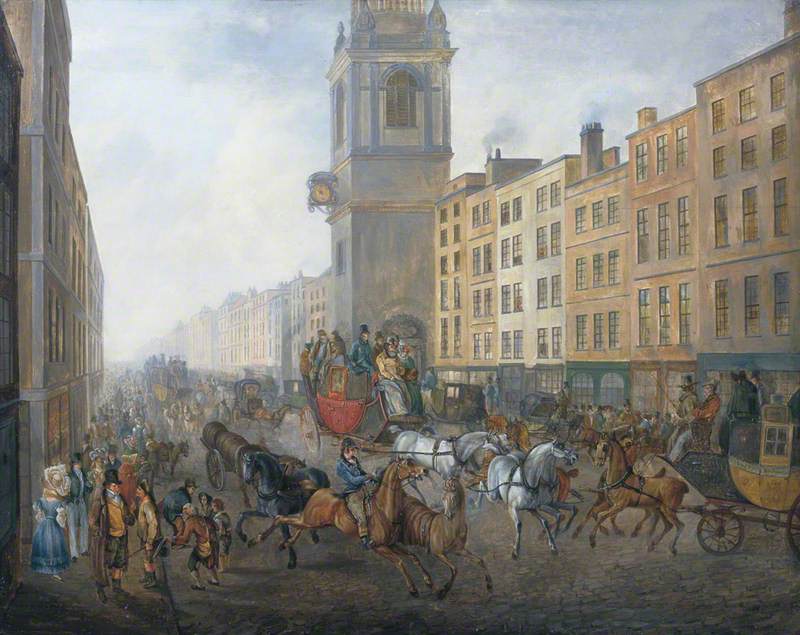
In Emma, the protagonist's sister Isabella Knightley shows off about her part of London (a familiar feeling to anyone who has ever defended their little patch of the capital):
'Our part of London is so very superior to most others! The neighbourhood of Brunswick Square is so very different from almost all the rest. We are so very airy!'
However, this wintry painting doesn't make Brunswick Square look particularly inviting – so we'll have to take Isabella's word for it.
Austen in real life
'I really believe I shall always be talking of Bath, when I am at home again – I do like it so very much... Oh! who can ever be tired of Bath?'
Austen's life and her novels cross over in Bath. Northanger Abbey and Persuasion are set in the spa town, with mention of the fashionable Assembly Rooms, which Jane and Cassandra used to frequent for dances and social events. This painting, by Rolinda Sharples, is unusual in that it vividly shows its subjects moving around; there aren't many Georgian paintings that depict such liveliness. You can imagine Jane – or one of her characters – mingling in among the crowd, talking, flirting, and getting ready for the delights of the evening ahead.
The Cloak-Room, Clifton Assembly Rooms
1818
Rolinda Sharples (1793–1838) 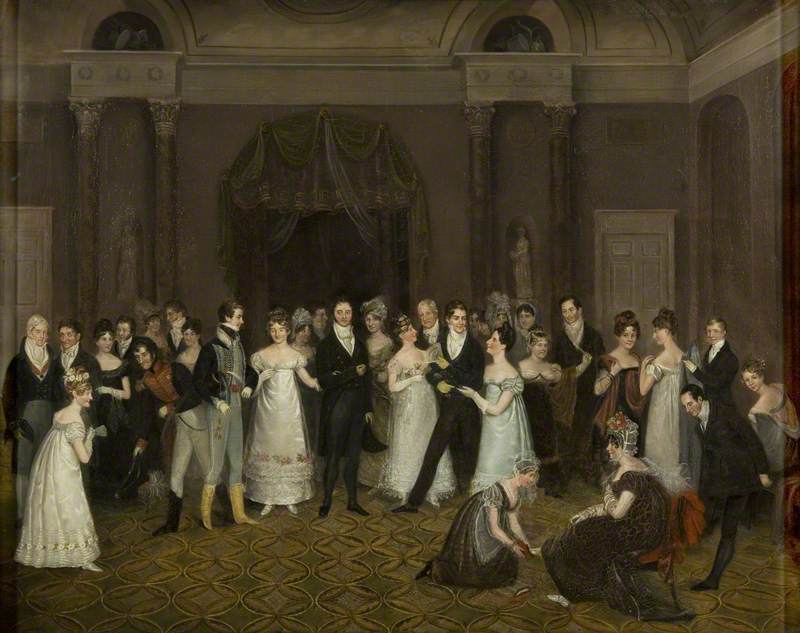
While Austen is often associated with Bath, she was born and raised in Hampshire, moving away with her family when she was 25. When growing up in Steventon, Jane and her sister would attend dances at The Vyne (another National Trust property now), though in contrast to the fictional Pemberley, there was no grand ballroom for the purpose. Furniture was moved back so that there was space to move around, and the dances were 'intimate affairs' rather than grand social occasions.
Finally, Art UK has a small collection of works from Jane Austen's House in Chawton, Hampshire: the place where Jane was most productive in her writing, revising her as-yet-unpublished manuscripts and writing three more novels. One work is a view of Chawton House, the home of Austen's brother Edward Austen Knight. The estate of Chawton House took in Jane's 'unpretentious cottage', where she would spend the final years of her life, being moved to Winchester just before her death in 1817.
Molly Tresadern, Art UK Content Creator and Marketer
